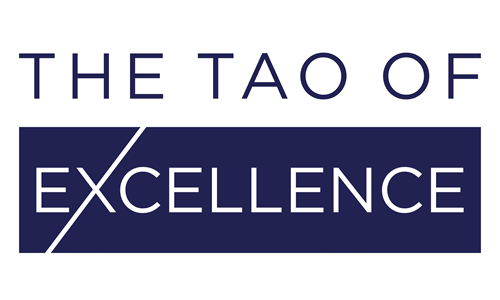Analysing where you are so that you can see where you are going—and beyond that where you can go—is an important practice for any individual or business. In the medical devices industry however, and especially in light of the new regulatory changes brought about by the implementation of MDSAP and the new MDR and IVDR, this analysis has become vital to evaluating your current system and the work and resources it will require to reach audit readiness.
New compliance standards mean that businesses and organizations are being called on to review their processes and practices at a more in-depth level than ever before. In addition to this, they must also be able to present their processes to relevant bodies or auditing organisations in order to meet their regulatory requirements.
Yet, the new-found importance of this analysis to compliance is only part of the story. The fast-pace of the medical devices market has made in-depth analysis across all areas of a business crucial to a company’s stability and ability to thrive. Manufacturers need to be able to continually assess internal and external realities in order to react quickly and adapt with agility to the priorities of their organization.
The combination of this new regulatory landscape and the speed of the market’s changing behaviours—each, largely due to the industry’s drive to improve patient safety, market transparency and integrate technological advancements—mean that companies need to perform a gap analysis to ensure that they can meet regulatory requirements and develop their business to its best advantage.
Whilst The Tao of Excellence has specialist expertise in helping companies perform their gap analysis, this article is built to introduce you to that process, how it works and how you can begin your own.
The process
Extensive regulatory changes brought about by MDSAP and the EU’s new MDR and IVDR mean that manufacturers must begin making decisions now about the resources that these new standards and their implementation will require, as well as how their product portfolio may need to change as a result.
In this current market context, a gap analysis is likely to address:
- the data collection required for MDSAP, the MDR and IVDR compliance
- reviewing quality system procedures
- the reclassification of products
- labelling changes
- new standards for clinical evaluation reports and post-market surveillance
- the agreements between suppliers, distributors and economic operators
- reviewing your product portfolio and adapting product design
A gap analysis is a toolbox for this decision-making process. It is systematic and objective rather than a subjective and enables organisations to identify which projects need to be prioritised for practicality, efficiency and in order to align with the business strategy. And this final point is key. Projects that align to strategy are 45% more likely to be completed within budget and 50% more likely to finish on time. They are also 57% more likely to achieve their stated business goals.[1]
A gap analysis should therefore be:
- performed as an opportunity to analyse a company’s systems and processes rather than any individual performance;
- entered into with an open mind, observing gaps through evidence rather than deciding the points beforehand;
- inclusive, involving and listening to people across the company, as well as company leaders, stakeholders and customers.
This process involves:
- creating a team that will run the gap analysis, defining their roles and responsibilities;
- assessing your compliance against the relevant regulatory standard
- making a strategy and assigning actions to close the gaps;
- a process for prioritising gaps;
- provide help where needed (by involving external specialists, such as technical, regulatory and clinical teams);
- utilising leadership (in a department or the company) to prioritise actions;
- reassessing your compliance after your actions are implemented to evaluate the relevance of the reviewed gaps.
How it works
The first step is to identify an initial set of strategically sound priorities. The best way to do this is to create ‘a prioritization matrix’. This will give you a clear understanding of the company’s most important objectives and the order of their priority, enabling you to strategize your plan for closing any gaps.
A prioritization matrix is a balance of data-driven evidence and your team’s collaborative intuition. It is created by using a weighted scoring model that assigns points to each initiative across your key criteria.
The key criteria in a gap analysis review to meet new regulatory requirements may include factors such as time, cost, workload and its importance to audit readiness. Scoring these criteria—as well as the criteria themselves—creates a framework that helps you to prioritise the gaps and assess the best way to allocate your resources.
Keep in mind that external and internal realities may change during that process, so use a software tool or model that can quickly and easily update your scores and adjust priorities accordingly.
What to watch out for
Uncollaborative scoring on projects can be an issue given that projects are essentially competing for time and resources. To resolve this, use a mechanism or tool that can ensure an objective rather than subjective process—such as, collecting correct and up-to-date data that will enable departments to collaborate on scoring projects and criteria quickly and accurately.
At The Tao of Excellence we offer in-depth expertise and experience using tools such as the prioritization matrix, as well as hands-on assistance helping company’s perform their gap analysis. Organizations should be aware that a mishandled gap analysis can be a burden on resources and may significantly delay the implementation of the changes your compliance requires. So, for speed, expertise or specialist assistance, begin your gap analysis by visiting our website for more information or contact us today for a consultation to secure the future of your business.
 Jasminka Roth
Jasminka Roth
Founder and Director of The Tao of Excellence
Phone
+41 52 685 51 65
Email
[email protected]
Did you like this article? Follow us on LinkedIn and Twitter!
[1] Transparent Choice Infographic: https://www.transparentchoice.com/content/three-reasons-to-align-projects-with-strategy-0

